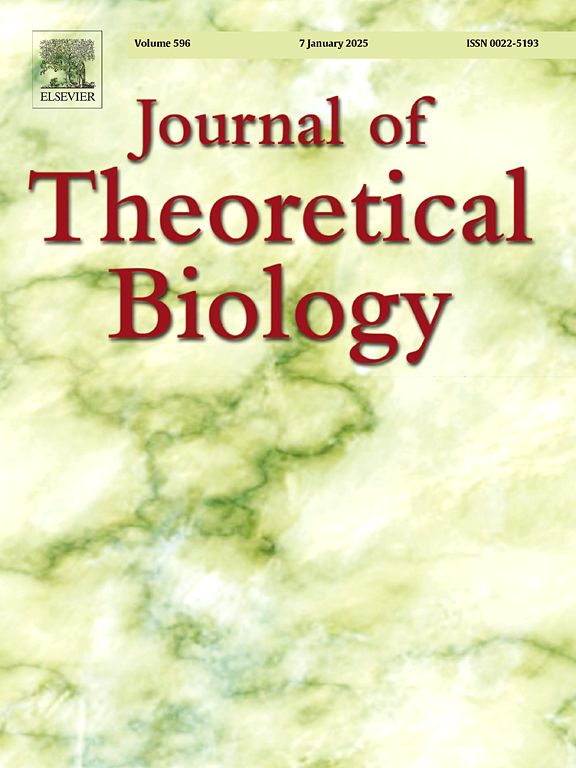接触数据与SARS-CoV-2:对英国首次封锁估计影响的回顾性分析
IF 1.9
4区 数学
Q2 BIOLOGY
引用次数: 0
摘要
2020年3月,为应对新冠肺炎的传播,英国宣布了一系列限制社交活动的措施,最终采取了封锁措施。使用大流行模型对封锁效果的估计依赖于接触数据的可用性和对如何相应地构建模型的选择。我们回顾了剑桥/英国公共卫生实时模型(RTM),该模型在大流行期间例行实施,以监测其发展并产生短期预测。为了得到接触矩阵,谷歌Mobility每周接触数据和教育部的出勤率数据与POLYMOD研究和英国时间使用调查的信息相结合。这些矩阵与敏感性和传播率参数相结合,估计有效繁殖数,并将其作为传播趋势的指标。我们探索了更充分利用现有接触数据的RTM替代公式,并评估了每种公式对封锁有效性结论的影响。结果表明,封锁的估计影响保持不变,但也揭示了以前未被捕获的早期流行病动态。这突出了及时获得接触数据对于了解流行病早期阶段的传播动态和评估干预措施的有效性的重要性。本文章由计算机程序翻译,如有差异,请以英文原文为准。
Contact data and SARS-CoV-2: Retrospective analysis of the estimated impact of the first UK lockdown
To combat the spread of SARS-CoV-2 in March 2020 the United Kingdom (UK) announced a series of restrictions on social interaction, culminating with the introduction of lockdown measures. Estimation of lockdown effectiveness using pandemic models relied on the availability of contact data and choices on how to structure models accordingly.
We revisit the Cambridge/Public Health England real-time model (RTM), which was routinely implemented during the pandemic to monitor its development and produce short-term projections. To derive contact matrices, Google Mobility weekly contact data and school attendance data from the Department for Education were combined with information from the POLYMOD study and the UK Time Use Survey. These matrices were combined with susceptibility and transmissibility parameters to estimate effective reproduction numbers, which were taken as indicators of transmission trends.
We explore alternative formulations of the RTM, which make fuller use of the available contact data, and assess the impact of each formulation on the conclusions of lockdown effectiveness. Results show that the estimated impact of the lockdown remains unchanged, but also uncover previously uncaptured early epidemic dynamics. This highlights the importance of the timely availability of contact data in understanding transmission dynamics during the early stages of an epidemic and assessing the effectiveness of interventions.
求助全文
通过发布文献求助,成功后即可免费获取论文全文。
去求助
来源期刊
CiteScore
4.20
自引率
5.00%
发文量
218
审稿时长
51 days
期刊介绍:
The Journal of Theoretical Biology is the leading forum for theoretical perspectives that give insight into biological processes. It covers a very wide range of topics and is of interest to biologists in many areas of research, including:
• Brain and Neuroscience
• Cancer Growth and Treatment
• Cell Biology
• Developmental Biology
• Ecology
• Evolution
• Immunology,
• Infectious and non-infectious Diseases,
• Mathematical, Computational, Biophysical and Statistical Modeling
• Microbiology, Molecular Biology, and Biochemistry
• Networks and Complex Systems
• Physiology
• Pharmacodynamics
• Animal Behavior and Game Theory
Acceptable papers are those that bear significant importance on the biology per se being presented, and not on the mathematical analysis. Papers that include some data or experimental material bearing on theory will be considered, including those that contain comparative study, statistical data analysis, mathematical proof, computer simulations, experiments, field observations, or even philosophical arguments, which are all methods to support or reject theoretical ideas. However, there should be a concerted effort to make papers intelligible to biologists in the chosen field.

 求助内容:
求助内容: 应助结果提醒方式:
应助结果提醒方式:


